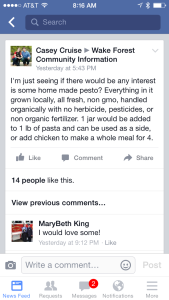Three children sickened in a recent E. coli outbreak in eastern North Dakota reported attending the Red River Valley Fair earlier this month, prompting state health officials to investigate whether animals there were the source of the infection.
 Officials said Monday it’s still early in the investigation, but they’re asking anyone who attended the fair, which ran from July 7 to 13, and developed diarrhea or bloody diarrhea for more than 24 hours within 10 days of the fair, to contact them.
Officials said Monday it’s still early in the investigation, but they’re asking anyone who attended the fair, which ran from July 7 to 13, and developed diarrhea or bloody diarrhea for more than 24 hours within 10 days of the fair, to contact them.
The shiga toxin-producing infection from Escherischia coli, or STEC infection, can cause nausea, cramping, diarrhea, vomiting and bloody diarrhea, symptoms that can be severe enough to require hospitalization.
One of the children has developed a complication from the infection which can affect red blood cells and cause kidney damage and kidney failure, said Michelle Feist, a state epidemiologist with the Division of Disease Control.
“Although the cases reported having contact with animals at the fair, we are looking into other possible exposures as well,” said Feist.
Red River Valley Fair General Manager Bryan Schulz expressed shock at the announcement, saying he’d heard no details from health officials other than a call early Monday inquiring from where the fair’s animals had come.
“We haven’t had a petting zoo for three years,” Schulz said. “I’m not sure where they’re getting this from.”
Schulz said while fair officials have been moving away from having petting zoos precisely because of concerns over E.coli, people at the fair could have reached through cage bars in the rabbit display area or petted baby pigs held by workers in the Ag Education Center.
A table of petting zoo outbreaks is available at https://barfblog.com/wp-content/uploads/2014/04/Petting-Zoo-Outbreaks-Table-4-8-14.xlsx.
Best practices for planning events encouraging human-animal interactions
Zoonoses and Public Health
G. Erdozain , K. KuKanich , B. Chapman and D. Powell
http://onlinelibrary.wiley.com/doi/10.1111/zph.12117/abstract?deniedAccess
Educational events encouraging human–animal interaction include the risk of zoonotic disease transmission. It is estimated that 14% of all disease in the US caused by Campylobacter spp., Cryptosporidium spp., Shiga toxin-producing Escherichia coli (STEC) O157, non-O157 STECs, Listeria monocytogenes, nontyphoidal Salmonella enterica and Yersinia enterocolitica were attributable to animal contact. This article reviews best practices for organizing events where human–animal interactions are encouraged, with the objective of lowering the risk of zoonotic disease transmission.
Erdozain G, Kukanich K, Chapman B, Powell D. 2012. Observation of public health risk behaviours, risk communication and hand hygiene at Kansas and Missouri petting zoos – 2010-2011. Zoonoses Public Health. 2012 Jul 30. doi: 10.1111/j.1863-2378.2012.01531.x. [Epub ahead of print]
Observation of public health risk behaviors, risk communication and hand hygiene at Kansas and Missouri petting zoos – 2010-2011Outbreaks of human illness have been linked to visiting settings with animal contact throughout developed countries. This paper details an observational study of hand hygiene tool availability and recommendations; frequency of risky behavior; and, handwashing attempts by visitors in Kansas (9) and Missouri (4), U.S., petting zoos. Handwashing signs and hand hygiene stations were available at the exit of animal-contact areas in 10/13 and 8/13 petting zoos respectively. Risky behaviors were observed being performed at all petting zoos by at least one visitor. Frequently observed behaviors were: children (10/13 petting zoos) and adults (9/13 petting zoos) touching hands to face within animal-contact areas; animals licking children’s and adults’ hands (7/13 and 4/13 petting zoos, respectively); and children and adults drinking within animal-contact areas (5/13 petting zoos each). Of 574 visitors observed for hand hygiene when exiting animal-contact areas, 37% (n=214) of individuals attempted some type of hand hygiene, with male adults, female adults, and children attempting at similar rates (32%, 40%, and 37% respectively). Visitors were 4.8x more likely to wash their hands when a staff member was present within or at the exit to the animal-contact area (136/231, 59%) than when no staff member was present (78/343, 23%; p<0.001, OR=4.863, 95% C.I.=3.380-6.998). Visitors at zoos with a fence as a partial barrier to human-animal contact were 2.3x more likely to wash their hands (188/460, 40.9%) than visitors allowed to enter the animals’ yard for contact (26/114, 22.8%; p<0.001, OR= 2.339, 95% CI= 1.454-3.763). Inconsistencies existed in tool availability, signage, and supervision of animal-contact. Risk communication was poor, with few petting zoos outlining risks associated with animal-contact, or providing recommendations for precautions to be taken to reduce these risks.
 The Herald Sun reports that senior chefs had regularly been summoned to meetings in January and February of last year to combat health and safety issues and improve standards.
The Herald Sun reports that senior chefs had regularly been summoned to meetings in January and February of last year to combat health and safety issues and improve standards.











